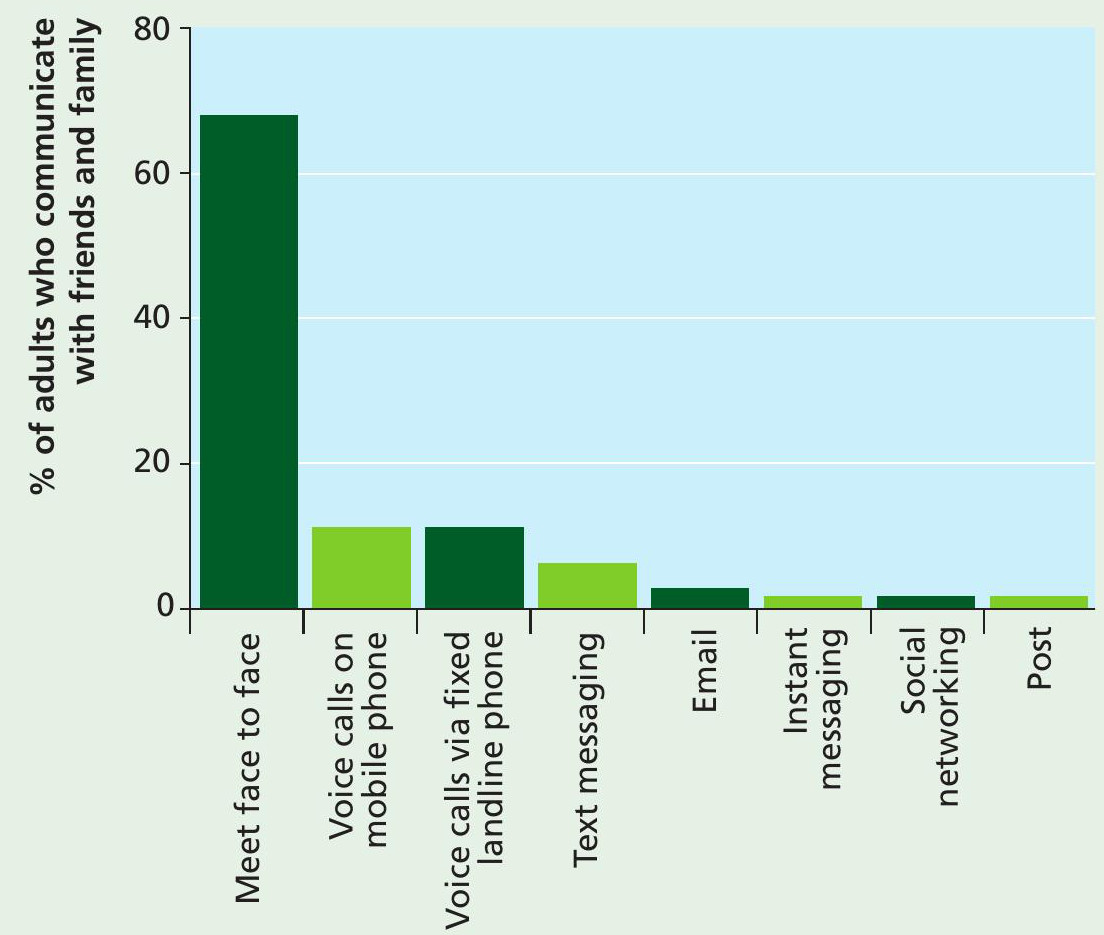
Just before the global recession kicked in, a new generation was identified by market analysts as the so-called Generation Y. These were young people in their late teens and early twenties, who were supposedly rebelling against their parents’ values, decrying lives that revolved so heavily around the world of work. Instead, they were said to be ready to ditch their jobs if they were not flexible or fulfilling—salary and status were not high on their priority list. New ways of communicating were also said to define this generation of young, technology-literate leisure and pleasure seekers.
What has happened since the financial crash to this generation who ‘believed they could have it all’ is unclear—perhaps their views on work and career have changed. But where we can see some real generational change is in how young people today communicate with each other. Recent research by Ofcom in its Communications Market Report (2012) shows that 66% of young people aged 16–24 years have a smartphone compared to only 2% of those over 65. Forty per cent of these young people say that they would ‘most miss’ their mobiles as a form of communication.
Your organisation does not have access to this article.
Sign up today to give your students the edge they need to achieve their best grades with subject expertise
Subscribe




